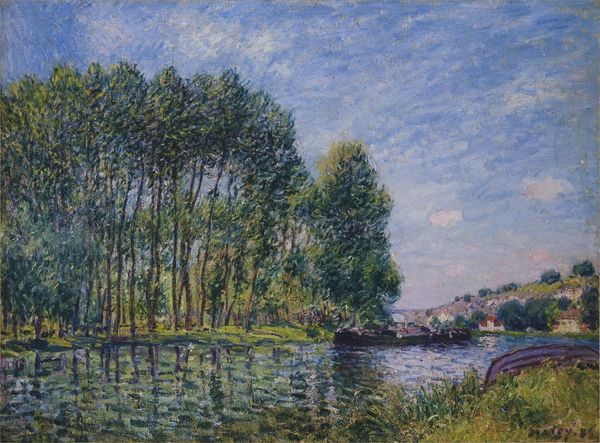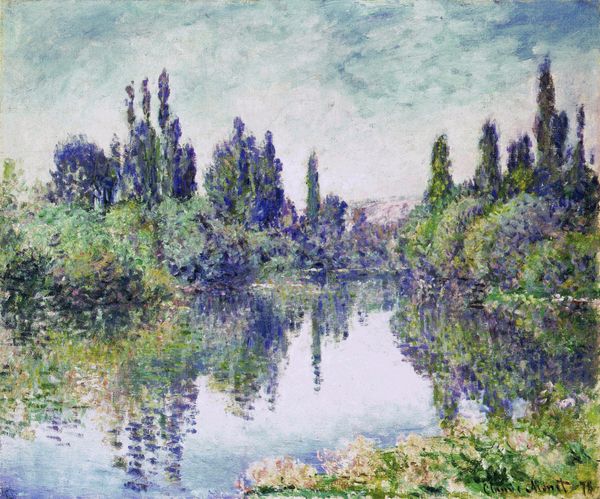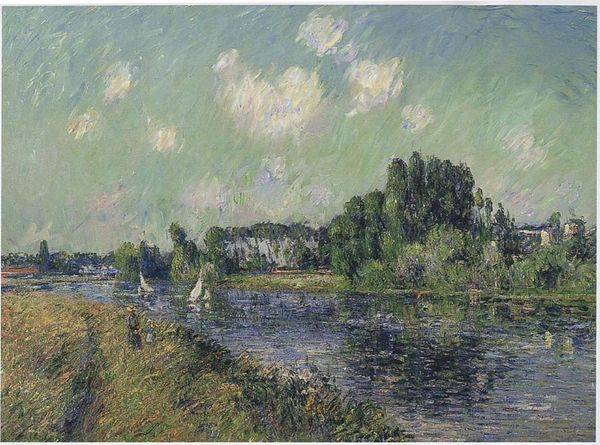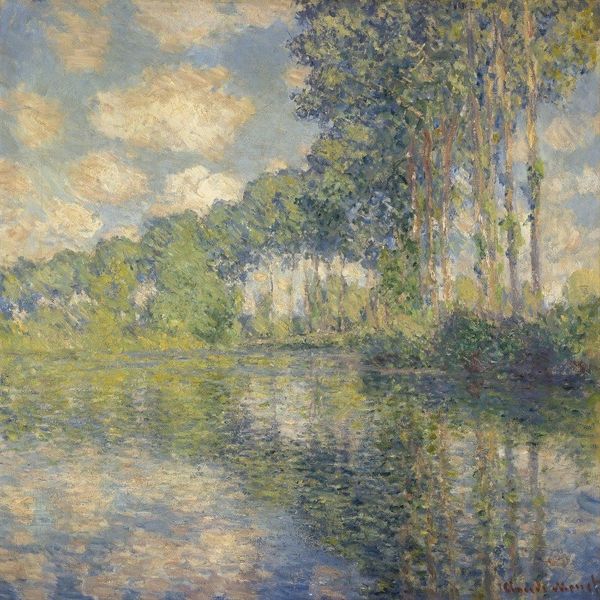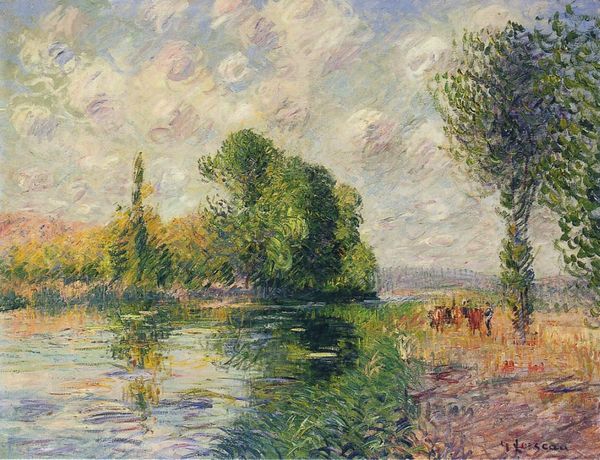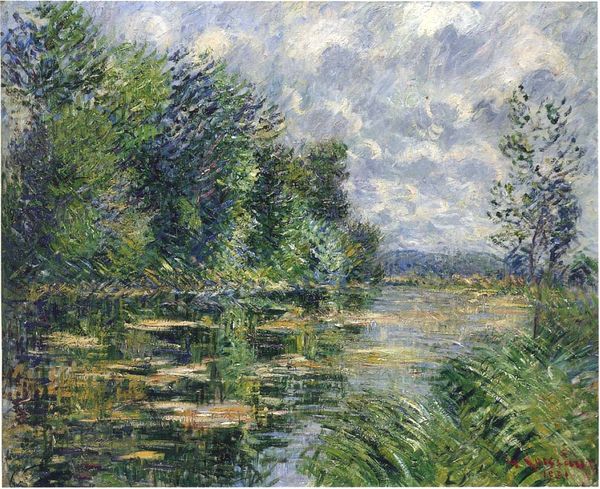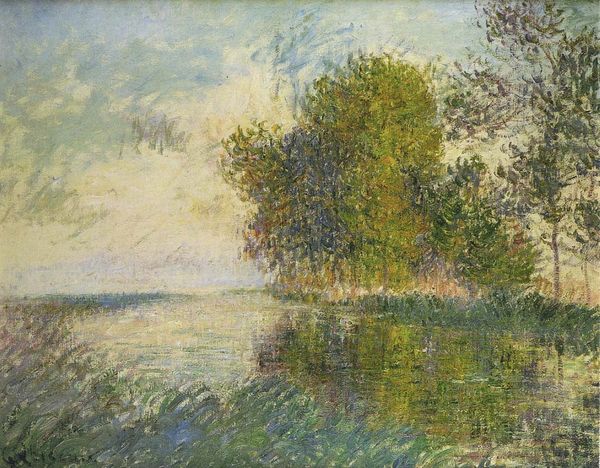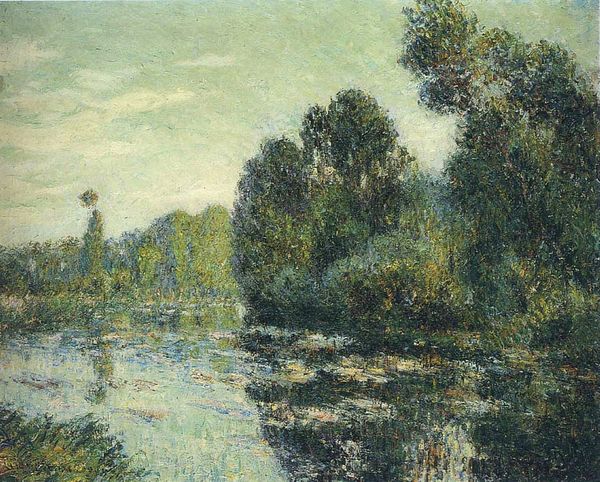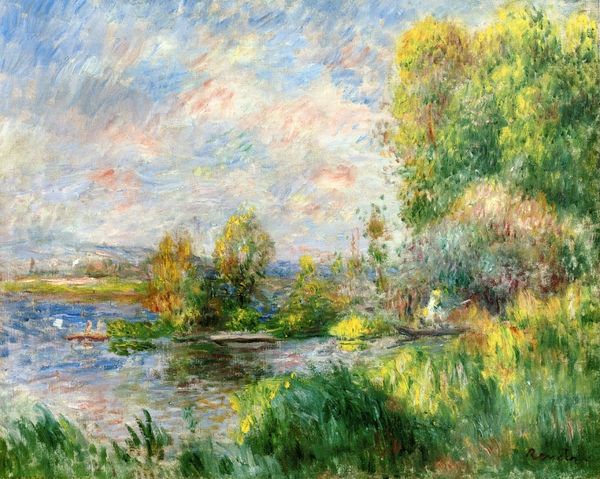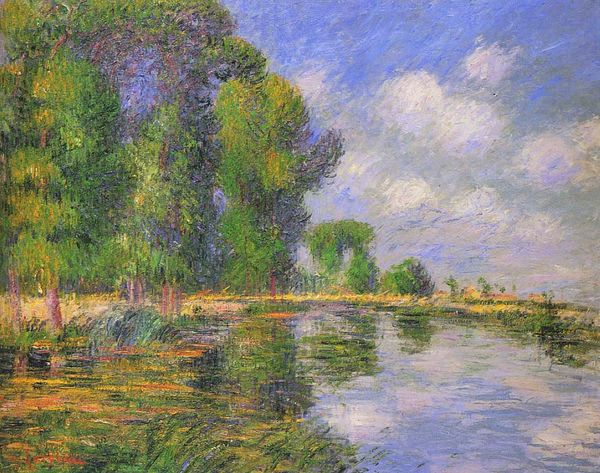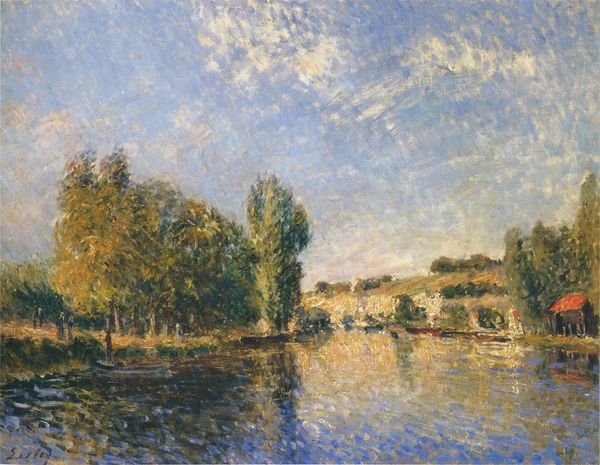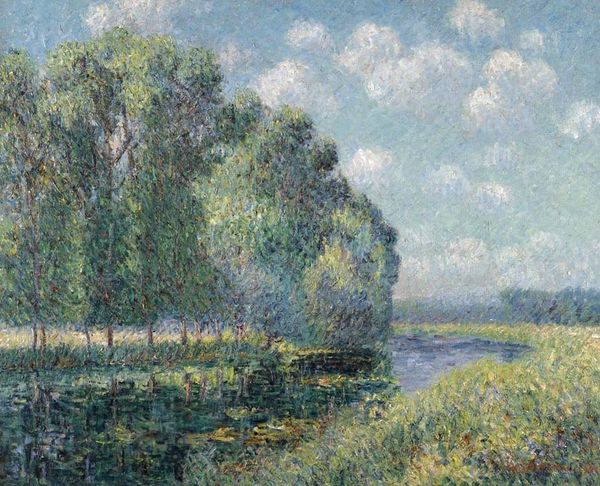
plein-air, oil-paint
#
impressionism
#
plein-air
#
oil-paint
#
landscape
#
oil painting
Dimensions: 54 x 73 cm
Copyright: Public domain
Editor: This is "The Loing at Moret," an oil painting created in 1886 by Alfred Sisley. I find it really serene, especially the way the trees are reflected in the water. What catches your eye about this painting? Curator: The reflections, definitely. Water as a mirror…it’s an ancient symbol, isn’t it? Think of Narcissus. But here, it's not about vanity. It’s about doubling, mirroring a place steeped in history and memory. That church in the distance...does that call anything to mind? Editor: I guess I just see a charming old building, typical of the French countryside. Curator: It is, on one level. But buildings, and churches in particular, are vessels of collective memory. Sisley wasn't just painting a scene; he was capturing a place dense with accumulated experience, knowledge and worship. The trees, mirrored in the water, feel like guardians, ancient witnesses to the unfolding history along the river Loing. Consider the painting's impressionistic style. Editor: I can see the symbolism, like, he chose this place specifically to kind of amplify that kind of meaning through art, right? Curator: Exactly. It isn’t just landscape for landscape’s sake. Sisley seems drawn to places where the past reverberates. This riverside almost feels like a threshold, doesn't it? What lies beyond that treeline reflected in the river? Editor: That's a great point; the mirroring adds layers to the image. I hadn't really thought of it as representing more than just… pretty scenery. I will start trying to interpret art at that level from now on. Curator: These artists often worked 'en plein air', too, and they’re deliberately recording how fleeting time etches into the enduring landscape itself, creating more complex layered symbolic images. I have some fresh ideas too.
Comments
No comments
Be the first to comment and join the conversation on the ultimate creative platform.
